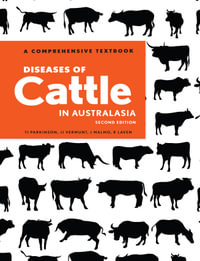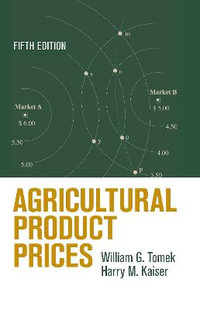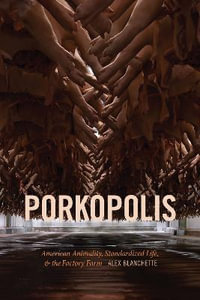| About the Editors | p. xiii |
| Contributors | p. xv |
| Preface | p. xix |
| Forest Tree Functional Genomics | |
| Functional Genomics in Forest Trees | p. 3 |
| Introduction | p. 3 |
| The Functional Genomics Tool Kit--Transcript Discovery and Profiling | p. 4 |
| Functional Genomics in Action | p. 10 |
| En Route to Functional Genomics in Forest Trees | p. 12 |
| Conclusions | p. 15 |
| Expressed Sequence Tag Databases from Forestry Tree Species | p. 19 |
| Introduction | p. 19 |
| Forestry Tree EST Databases | p. 21 |
| The Genesis Pine and Eucalyptus EST Projects | p. 26 |
| Special Purpose Libraries | p. 41 |
| Conclusion | p. 47 |
| Proteomics for Genetic and Physiological Studies in Forest Trees: Application in Maritime Pine | p. 53 |
| Introduction | p. 53 |
| Characterization of the Pine Proteome | p. 55 |
| Genetic Variability of Qualitative and Quantitative Protein Variants | p. 62 |
| Variability of Proteome Expression in Physiological Studies | p. 68 |
| Conclusion | p. 73 |
| Exploring the Transcriptome of the Ectomycorrhizal Symbiosis | p. 81 |
| Introduction | p. 81 |
| The Ectomycorrhizal Symbiosis | p. 82 |
| The Anatomy and Development of Ectomycorrhiza | p. 83 |
| The Morphogenesis of Ectomycorrhiza | p. 86 |
| Alteration in Gene Expression in Ectomycorrhiza | p. 87 |
| The Transcriptome of Ectomycorrhizal Symbioses | p. 90 |
| Outlook | p. 102 |
| Molecular Biology of Wood Formation | |
| Genomics of Wood Formation | p. 113 |
| Introduction | p. 113 |
| Wood Biosynthesis | p. 114 |
| Regulation of Wood Formation | p. 120 |
| Arabidopsis As a Model for the Study of Wood Formation | p. 123 |
| Genomics Approach to Wood Formation | p. 124 |
| The Outlook | p. 132 |
| Molecular Genetics of Cellulose Biosynthesis in Trees | p. 141 |
| Introduction | p. 141 |
| Cellulose Heterogeneity in Trees | p. 142 |
| Cellulose Production Under Mechanical Stress | p. 143 |
| The Site of Cellulose Biosynthesis | p. 144 |
| Current Knowledge of the General Process of Cellulose Synthesis in Plants | p. 145 |
| Identification of CesA Genes in Plants | p. 146 |
| Isolation of New CesA and CSLD Genes | p. 151 |
| Future Perspectives | p. 162 |
| Tuning Lignin Metabolism Through Genetic Engineering in Trees | p. 167 |
| Introduction | p. 167 |
| Genetic Modification of PAL and C4H | p. 171 |
| Genetic Modification of 4CL | p. 174 |
| Genetic Modification of C3H | p. 174 |
| Genetic Modification of CCoAOMT | p. 175 |
| Genetic Modification of CCR | p. 175 |
| Genetic Modification of F5H | p. 176 |
| Genetic Modification of COMT | p. 177 |
| Genetic Modification of CAD | p. 179 |
| Genetic Modification of Peroxidases and Laccases | p. 181 |
| Genetic Modification of Transcription Factors | p. 182 |
| Outlook | p. 183 |
| In Vitro Systems for the Study of Wood Formation | p. 193 |
| Introduction | p. 193 |
| Cambial Activity | p. 194 |
| Wood Formation | p. 194 |
| The Formation of Tracheary Elements | p. 195 |
| Heartwood Formation (Tylosis and Pit Aspiration) | p. 196 |
| In Vitro Wood Formation Systems | p. 199 |
| Future Perspectives | p. 203 |
| Forest Tree Transgenesis | |
| Genetic Modification in Conifer Forestry: State of the Art and Future Potential--A Case Study with Pinus radiata | p. 215 |
| Introduction | p. 215 |
| Tissue Culture As a Tool for Molecular Research | p. 216 |
| Genetic Engineering in Conifers | p. 218 |
| Modification of Traits by Suppression of Gene Expression | p. 222 |
| Analysis of Promoters Controlling Gene Expression in Conifers | p. 224 |
| Tissue Culture Protocols for the Early Assessment of Gene Function | p. 226 |
| Tools to Assess Gene Function at the Micro Level | p. 230 |
| Conclusions | p. 235 |
| Transgenic Forest Trees for Insect Resistance | p. 243 |
| Introduction | p. 243 |
| Woody Plant Species Transgenic to Insect-Resistant Genes | p. 244 |
| Insect-Resistant Genes | p. 248 |
| Field Performance of Insect-Resistant Transgenic Trees | p. 251 |
| Biosafety of Insect-Resistant Transgenic Plants | p. 254 |
| Conclusion and Outlook | p. 255 |
| Modification of Flowering in Forest Trees | p. 263 |
| Introduction | p. 263 |
| Regulation of Flowering Time and Flower Development in Arabidopsis | p. 264 |
| Genes Regulating Flower Development in Trees | p. 267 |
| Prevention of Flowering | p. 275 |
| Acceleration of Flowering | p. 281 |
| Conclusions | p. 283 |
| Stability of Transgene Expression in Aspen | p. 293 |
| Introduction | p. 293 |
| rolC Gene, a Phenotypic Marker for the Stability of Transgene Expression | p. 294 |
| Morphological Analysis of 35S-rolC Transgenic Aspen Plants | p. 295 |
| Transgene Silencing | p. 297 |
| Transgene Repeat Formation and Unstable Expression | p. 297 |
| Transgene Integration and Unstable Expression | p. 300 |
| Mechanisms of Transgene Integration and Repeat Formation | p. 300 |
| How to Obtain Stably Expressing Transgenic Plants | p. 302 |
| Future Perspectives | p. 303 |
| Asexual Production of Marker-Free Transgenic Aspen Using MAT Vector Systems | p. 309 |
| Introduction | p. 309 |
| Transformation Methods Using Agrobacterium | p. 310 |
| Problems of Antibiotic Selection | p. 311 |
| Principles of the MAT (Multi-Auto-Transformation) Vector System | p. 313 |
| Two-Step Transformation of Tobacco Plants Using the GST-MAT Vector | p. 316 |
| Transformation of Hybrid Aspen Using the GST-MAT Vector | p. 320 |
| Current Techniques for Removing Selectable Markers and Their Problems | p. 323 |
| Advantages of Selection Using the ipt Gene | p. 327 |
| Transgene Stacking Using the ipt-MAT Vector | p. 329 |
| Combination of the ipt and iaaM/H Genes | p. 331 |
| Decrease in Environmental Impact Using Sterile Transgenic Trees | p. 334 |
| Conclusion | p. 335 |
| Genome Mapping in Forest Trees | |
| High-Density Linkage Maps in Conifer Species and Their Potential Application | p. 341 |
| Introduction | p. 341 |
| Basic Aspects for Constructing High-Density Maps in Conifer Species | p. 342 |
| Application of High-Density Maps in Forest Species | p. 347 |
| Conclusions and Perspectives | p. 352 |
| Microsatellites in Forest Tree Species: Characteristics, Identification, and Applications | p. 359 |
| Introduction | p. 359 |
| Microsatellites in the Nuclear Genome: Distribution and Variability | p. 360 |
| From Genome to Populations: The Isolation of Microsatellites and the Development of Molecular Markers | p. 364 |
| Microsatellites in Populations: SSRs As a Tool for the Screening of Diversity, Differentiation, and Evolution | p. 365 |
| What is Different About Microsatellites of the Organelle Genomes? | p. 370 |
| Conclusions | p. 378 |
| Genome Mapping in Populus | p. 387 |
| Introduction | p. 387 |
| Marker Systems | p. 388 |
| Mapping Strategies | p. 389 |
| Genetic Linkage Maps of the Populus Genome | p. 389 |
| Comparison of Linkage Maps | p. 404 |
| Perspectives | p. 406 |
| Genetic Mapping in Acacias | p. 411 |
| Introduction | p. 411 |
| Aspects of the Reproductive Biology of Acacias That Affect Genetic Mapping Strategies | p. 412 |
| Linkage Mapping in Acacia mangium | p. 414 |
| Applications of the Acacia Map | p. 420 |
| Conclusions | p. 422 |
| Index | p. 429 |
| Table of Contents provided by Rittenhouse. All Rights Reserved. |
























